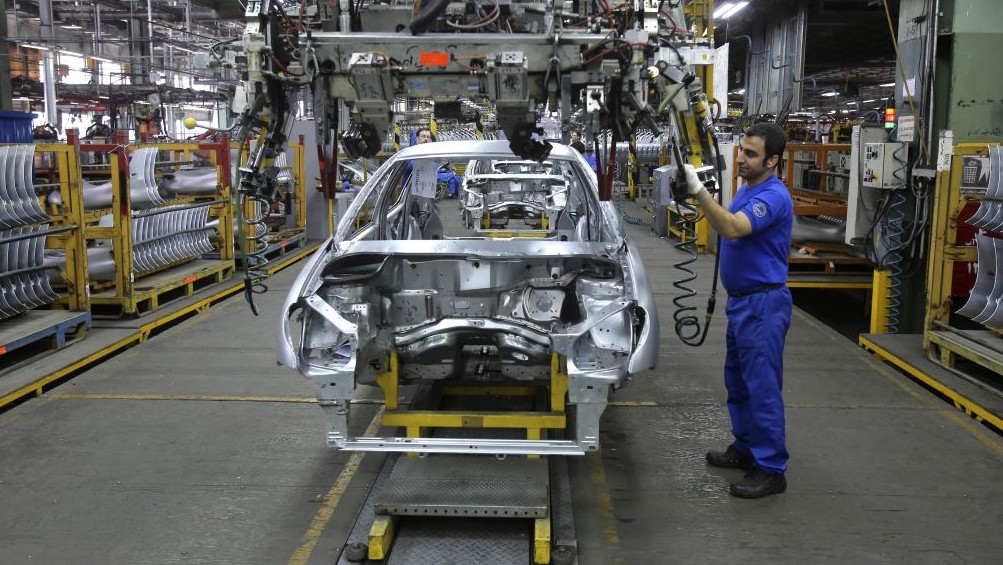Chairman of the Industrial Development and Renovation Organization of Iran (IDRO), Mansour Moazami, told a press briefing at the opening of the new Punch Powertrain transmission manufacturing factory in Zanjan on Tuesday that Iran will produce three million cars a year by 2023.
IDRO, which has stakes in the two main car manufacturing groups, IKCO and SAIPA, struck out on its own in recent months to sign contracts with firms like Renault Group and Punch.
Moazami said in the past 10 months Iran produced one million cars, up from last year’s results or a growth of 40% y/y. The estimate is around 1.3 million vehicles by the end of the current fiscal in March.
He was hopeful that the national industry would produce an estimated three million cars by 2023 -- a record if the target is achieved. “Iranian companies could export a million vehicles to other markets.”
Moazami’s stance that Iran wants to double the projected 2018 output by 2023 and export one million vehicles to other markets sounds rather ambitious. But the target can be achieved if the key industry plays its cards right.
There are several hurdles the sector will very likely face in the coming years.
First is capacity. Iran’s aging (some say ailing) automotive industry and its infrastructure is already running at full capacity as seen in the production numbers. This year’s output is already close to levels before the economic sanctions were tightened in 2012.
New factories will take time to come online, and in the next few years these facilities will need to produce a lot more vehicles if they are to meet the higher targets.
Secondly, in 2011 Iran produced 1.64 million cars which was the best year ever for the industry. That was partly due to oil prices when a barrel of crude oil was sold for $100 and above. Five weeks into 2017 crude languishes at about less than half of those prices at $50. Not very long ago and before major oil producers decided last November to cut exports to boost sagging prices, the poor black gold was at or below $30.
Iran as a whole is still in belt-tightening mode largely due to the low oil prices and may well be in the tight position for the foreseeable future.
Prohibitive Lending Rates
Third, credit for purchasing new cars also continues to look weak across the industry’s dealership network. Car companies continue to offer long-term credit at interest rates of up to 35%. Those are beyond the reach of most buyers, especially fixed-wage earners.
However, looking forward, international firms like Renault who seem to be making significant investments in Iran could shake up the long-term projection, if they offer schemes like those in Europe.
Moreover, other recently signed private sector deals, like Volkswagen and Mammut Group potentially offer the industry variety not seen before.
Last but not least, is Iran’s goal of joining the World Trade Organization.
The Islamic Republic’s application procedure which is said will be accepted in 2023, poses another issue for growth of the automotive industry.
In the next few years, for membership in the global trading organization, Iran must, among other things, lower its overall import tariffs on vehicles.
With protectionism out the window, foreign car importers would flood the market and the dominance of the local industry that presently rules supreme, would almost surely be in jeopardy.
If Iran does finally get accepted into the global trading order, then things on the ground would need to change.
The WTO’s 164 member states account for nearly all of the world trade. With Iran as observer in the WTO the three million target looks a pretty long shot.


